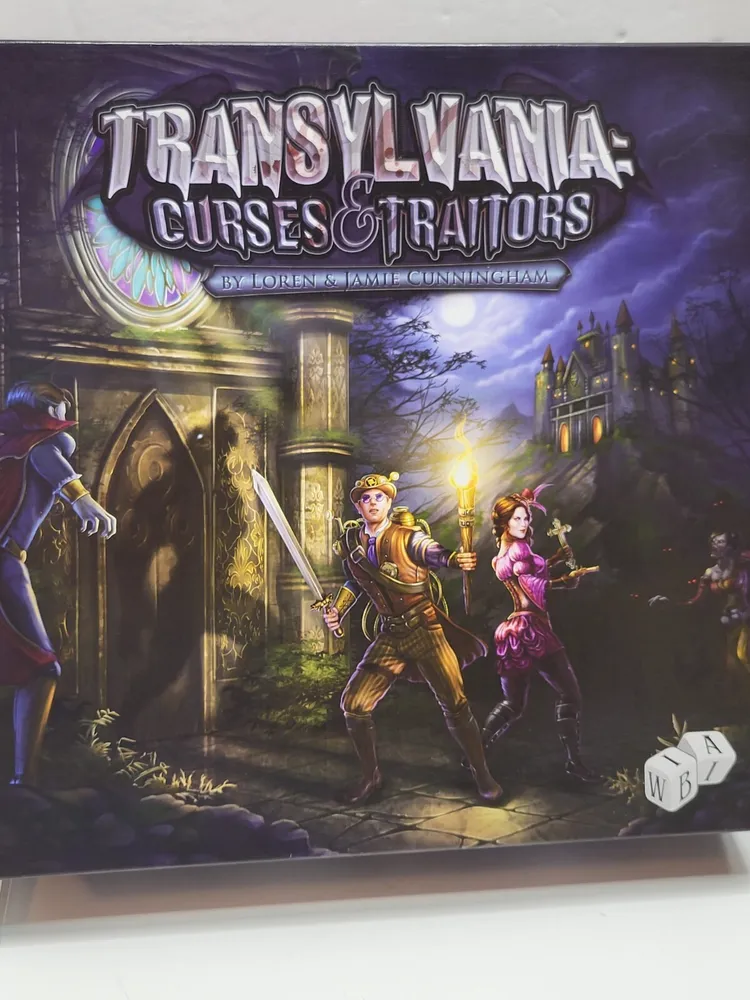Transylvania
“Transylvania” is a microgame published by Mayfair Games in 1981 that simulates a battle between Transylvanian villagers and the evil forces that surround them. The game is popular and significant due to its simple gameplay and thematic appeal to vampire enthusiasts.
Game Components of Transylvania
Cardstock cut-apart countersA single page of rulesA simple map divided into the village, the castle, the surrounding forest, and six areas designated A to FUnits include peasants, knights, priests, men-at-arms for the villagers, and vampires, skeletons, wolves, rats, and bats for the evil forces
How To Setup Transylvania
To set up the game, each player selects their units and places them on the designated starting areas. The villagers start in the village, while the evil units start in either the castle or the forest. The game board is laid out with the map showing the different areas where units can move and interact.
Gameplay Mechanics and Game Objective
Game Phases: Each turn is divided into four phases: Build and Score, Morning, Afternoon, and Night.Build and Score: Players build new units if they have the points. Villagers start in the village, and evil units start in the castle or forest. Points are scored for occupying specific areas.Morning: Villagers, wolves, and rats can move one space, or two if villagers move along the road. Vampires, skeletons, and bats cannot move.Afternoon: Villagers, wolves, and rats can move again. Vampires, skeletons, and bats still cannot move.Night: Skeletons and bats can move two spaces. Vampires can move unlimited spaces along dotted lines and must return to the castle at the end of the night phase. Villagers, wolves, and rats cannot move.Combat Mechanics: Combat is resolved by rolling dice, where the attacker must roll a number greater than the defense rating of the unit being attacked.Victory Conditions: The game ends if the evil player has units in the village at the end of a night phase, or if the forces of Good have a unit inside the castle at the end of a morning or afternoon phase. The player with the most points wins.
Player Experience
Transylvania is a simple, two-player board wargame designed for quick play. The game’s components are minimalistic, which was a hallmark of microgames in the 1980s. Players need to strategize unit movements and placements carefully to succeed, as the game’s phases and unit abilities create a dynamic and somewhat unpredictable environment.
Pros
Quick Play: The game is designed for fast gameplay.Simple Rules: Easy to learn and understand.Affordable: Originally priced at $3.00, it was one of the cheaper options in its series.
Cons
Cheap Components: The game’s components, such as cardstock counters, are of low quality.Limited Depth: The game design is basic and lacks innovation.Misspelled Title: The cover has a misspelled title, “Translyvania.”
Personal Thoughts on Transylvania
Transylvania is for those who enjoy simple, quick wargames with a fantasy theme. It might appeal to collectors of retro board games or those interested in the early days of microgames. However, due to its lackluster components and basic design, it may not be the best choice for players seeking complex strategy or high-quality game components.
We are supported by our audience. When you purchase through links on our site, we may earn an affiliate commission, at no extra cost for you. Learn more.

